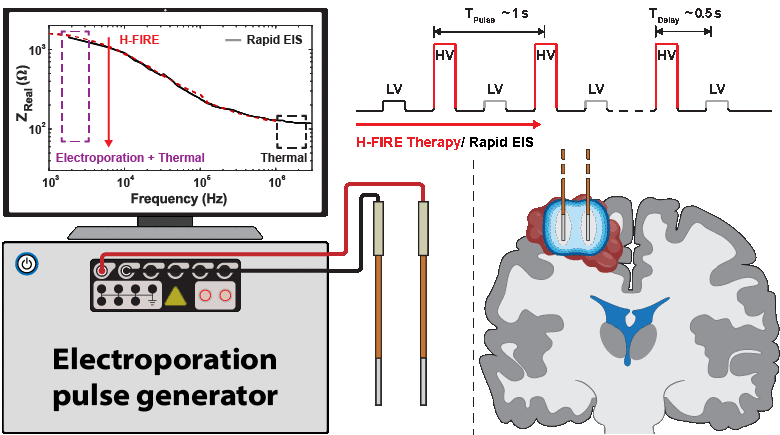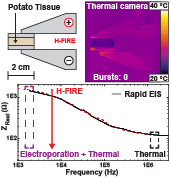
Electroporation-based therapies (EBT) employ high voltage pulsed electric fields to permeabilize tumor tissue; this cell membrane permeabilization results in detectable impedance changes throughout treatment. Impedance characterization is typically accomplished using a commercial potentiostat, though this has limited applicability since the timeframe for impedance acquisition (~10s) is larger than pulse periods used with EBTs (~1s). In this study, we develop a rapid electrical impedance spectroscopy (EIS) methodology for real-time (<1s) impedance characterization of electroporation and thermal effects during irreversible electroporation. A charge-balanced, bipolar rectangular chirp signal is proposed for rapid EIS. This signal is compatible with existing electroporation generators and is intended to be interlaced between each high-voltage pulse. Validation of rapid EIS measurements against a commercial potentiostat was conducted in potato tissue for the measurement of impedance changes throughout IRE treatment. Flat-plate electrodes were then used to uniformly heat potato tissue; throughout high-voltage high-frequency IRE treatment, low-voltage impedance measurements were used to continually monitor impedance change and to identify a frequency at which thermal effects are delineated from electroporation effects. The rapid EIS waveform allows for impedance measurements between 1.8 kHz – 4.93 MHz at 216 discrete frequencies. Impedance measurements at frequencies above ~1 MHz served to delineate thermal and electroporation effects in measured impedance. We demonstrate rapid-capture (<<1s) EIS which enables monitoring electroporation-mediated impedance change in real-time. For the first time, we show impedance analysis at high frequencies can delineate thermal effects from electroporation effects in measured impedance. The proposed waveform demonstrates the potential to perform rapid EIS using pulsed electric fields compatible with existing pulse generator topologies.

